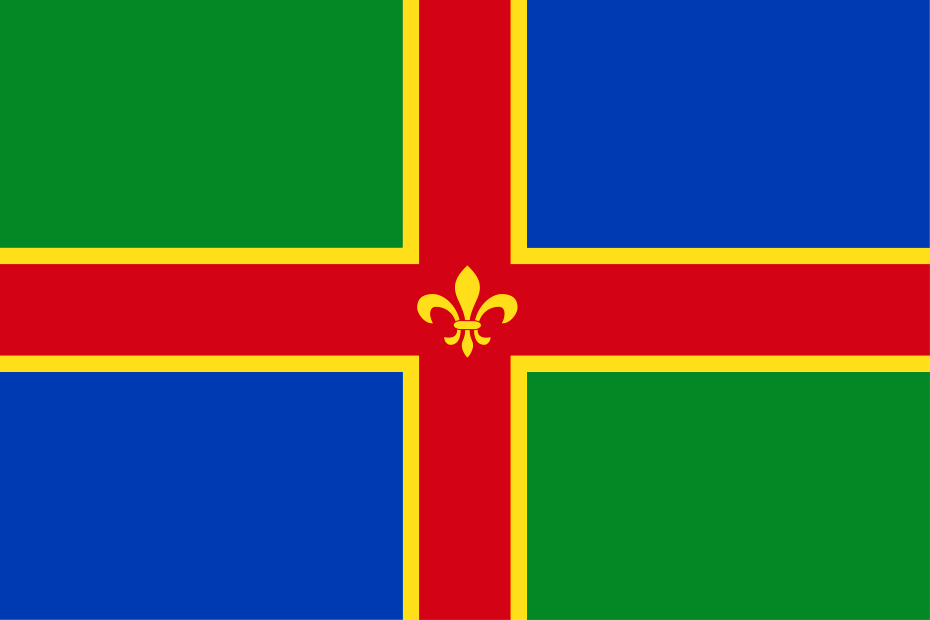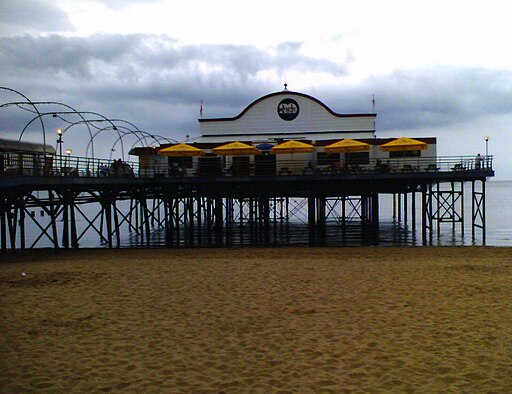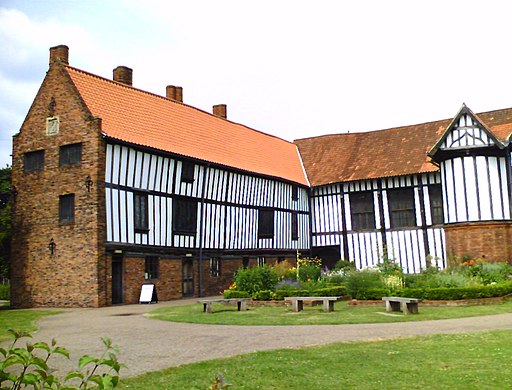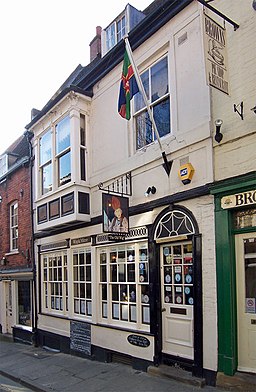Search the Gazetteer
Are the results not as expected? Modify your search term or change the scope to refine your search.
Results for a place that exactly matches ...
Lincolnshire
Lincolnshire, England
 Lincolnshire is a maritime county on the east coast of England. The county is divided into the three parts: Holland (south-east); Kesteven (south-west); and Lindsey (north). It is a very flat county, extending from the fenland in the south and round the Wash, along the North Sea coast to the Humber. Lincoln is a city of mediæval charm, with a large castle and larger cathedral. The Lincoln Edge runs in a straight line for some forty miles, though “the Heights” rarely reach even 200 ft. Along Lindsey's coast lie the resorts of Skegness and Cleethorpes and the ports of Grimsby and Immingham. The historic port of Gainsborough stands on the Trent. The "Industrial Garden Town' of Scunthorpe lies to its east. Boston, in Holland, is famed for St Botolph's Church, "The Stump". Grantham, in Kesteven, lies close to Woolsthorpe Manor, birthplace of Sir Isaac Newton. Stamford, on the Northamptonshire border, is a jewel built in rich Barnack rag stone.
Lincolnshire is a maritime county on the east coast of England. The county is divided into the three parts: Holland (south-east); Kesteven (south-west); and Lindsey (north). It is a very flat county, extending from the fenland in the south and round the Wash, along the North Sea coast to the Humber. Lincoln is a city of mediæval charm, with a large castle and larger cathedral. The Lincoln Edge runs in a straight line for some forty miles, though “the Heights” rarely reach even 200 ft. Along Lindsey's coast lie the resorts of Skegness and Cleethorpes and the ports of Grimsby and Immingham. The historic port of Gainsborough stands on the Trent. The "Industrial Garden Town' of Scunthorpe lies to its east. Boston, in Holland, is famed for St Botolph's Church, "The Stump". Grantham, in Kesteven, lies close to Woolsthorpe Manor, birthplace of Sir Isaac Newton. Stamford, on the Northamptonshire border, is a jewel built in rich Barnack rag stone.Portrait of Lincolnshire.
Place Type: Historic County
Lat, Long: 53.221969,-0.297451
Grid Reference: TF137707
Country: England
GBPNID: 305761
Entry Type: Main listing (P)
URL: https://gazetteer.org.uk/place/Lincolnshire
 Explore Lincolnshire on Wikishire
Explore Lincolnshire on WikishireHolland occupies the south-east of the county. In it lie the Lincolnshire Fens, part of the Great Fen which spreads over the lands around the Wash in Lincolnshire and Norfolk and deep inland in Cambridgeshire, Huntingdonshire and the Soke of Peterborough. Much of the land here is at or below sea level and was once a vast fen of wetland, lakes and channels, now drained to produce fertile farmland.
Boston is the major town in Holland. Boston's most notable landmark is St Botolph's Church, known as "The Stump", the largest parish church in Britain with one of the highest towers, visible in the flat lands of Lincolnshire for many miles. The market town of Spalding is well known for its annual 'Flower Parade' and for Ayscoughfee Hall, a grade I listed grand house.

Boston Stump
Kesteven occupies the south-west of the county. Though the Fens spread into the east of Kesteven, the western side is more hilly. The market town of Bourne lies on the western edge of the Fens and the eastern edge of the Kesteven Uplands. Nearby, Grimsthorpe Castle stands within a 3,000 acre park of rolling pastures, lakes, and woodland landscaped by Capability Brown. Market Deeping, on the Northamptonshire border, is known for its stone buildings dating back to the 17th century and its 15th century church.
The town of Stamford lies in the far south-west corner of Lincolnshire famed for its mediæval core of streets, lined with 17th-18th century stone buildings, older timber framed buildings and five mediæval parish churches. The River Welland, the border with Northamptonshire, runs at the bottom of a steep hill down which narrow lanes tumble to the meadows where the river is bridged by a fine bridge of Barnack stone.
The market town of Grantham, on the River Witham and astride the Great North Road, is Kesteven's main town. Grantham House (NT) is a town house built in 1380. North of Grantham is Belton House (NT), described as a compilation of all that is finest of Carolean architecture. South of Grantham, Harlaxton Manor is a Jacobethan manor and a popular location for filming historical dramas. A little further south is Woolsthorpe Manor (NT), birthplace of Sir Isaac Newton and where he performed many of his most famous experiments.

Woolsthorpe Manor
The Lincoln Edge is a remarkable stretch of high ground that runs from north of Grantham, northwards for 50 miles through Kesteven into Lindsey, its northern end close to the Humber. "The Heights", as it is known, rarely reach even 200 feet above sea level, but still tower over the fenland to the east.
In the north and west of Kesteven, the River Welland forms its border with Lindsey. Several towns and villages now considered southern suburbs of Lincoln, including Bracebridge and North Hykeham, lie in Kesteven. Nearby is Doddington Hall, an Elizabethan mansion complete with walled courtyards and a gabled gatehouse.
Lindsey is much the largest of the three parts, covering the north and east of the county. The Fens stretch into its south-east, north to Spilsby and east to Coningsby. Near Coningsby is Tattershall Castle (NT) a brick-built 15th-century structure which has been described as "the finest piece of mediæval brick-work in England".

Tattershall Castle
North of here lie the Lincolnshire Wolds, the county's highest land. The Wolds run roughly parallel with the North Sea coast from north of Spilsby to the River Humber. The Wolds are a striking range, rising suddenly and unexpectedly out of the flatness of the Lindsey landscape, with a gorgeous rolling farmland poised high to look out over the vastness of the county's plains below. The market town of Louth is known as "the capital of the Lincolnshire Wolds". On the western edge of the Wolds lies Market Masen, with much Georgian and Victorian architecture and the Market Rasen Racecourse. In the south of the Wolds is the village of Somersby, birth place and childhood home of Alfred, Lord Tennyson. Somersby Grange is a Georgian country house adjacent to the rectory, now called Somersby House, where Tennyson was born. At the southern edge of the Wolds is the 18th century country house Gunby Hall (NT), described by Tennyson as "a haunt of ancient peace".

Gunby Hall gardens and dovecot
East of the Wolds, lies the coast. At Lindsey's southern end is the famous seaside town of Skegness, where Butlins first resort was opened in 1936. To the north of Skegness are the smaller holiday villages of Chapel St Leonards, Sutton-on-Sea and Mablethorpe. At the edge of the Humber estuary are the resort town of Cleepthorpes and the historic port towns of Grimsby and Immingham. Barton-on-Humber is famed for its ancient church, whose tower is a rare example of a surviving large Anglo-Saxon building.

Cleethorpes Pier
In the south-east of Lindsey lies the county town. The City of Lincoln stands on the Lincoln Edge, tumbling down to the River Withan and up again. It is a city of Roman origin and mediæval charm, with sword and mitre at its peak: a large castle and larger cathedral, the twin powers of their time. The ruins of the Bishop's Palace (EH), once one of the most impressive buildings in mediæval England, are situated on a spectacular hillside site, just below Lincoln cathedral. St Mary's Guildhall was built about 1160 as a luxurious residence, possibly as a royal palace for Henry II.

Lincoln Cathedral
Further north on the Lincoln Edge lies Kirton-in-Lindsey, one-time home of Catherine Parr. Further north still lies Scunthorpe, both a market town and an industrial town, known as the "Industrial Garden Town".
Between the Lincoln Edge and the Wolds, in the north of the county, lie The Carrlands. The River Ancholme once flooded regularly and the lands used as seasonal pasture. After Enclosure and drainage, the carrs were turned over to arable agriculture. This is a man-made landscape with no striking vistas, only the bridges offer viewpoints over the level expanse.
In the north-west corner of Lindsey lies the Isle of Axholme. The name Isle is given to the area since, prior to the area being drained by the Dutchman Cornelius Vermuyden, each town or village was built on areas of dry, raised ground in the surrounding marshland. Three small towns developed here. Epworth is the birthplace of John Wesley and his brother Charles. Crowle has a Gothic-revival market hall. Haxey is famed for its Twelfth Night game, the Haxey Hood, which has been played for over 700 years, reputedly making it "Britain’s oldest traditional tussle".
South of Axholme, on the Trent, stands the historic port of Gainsborough. Gainsborough Old Hall (EH) is a large, 15th-century, timber-framed mediæval strong house, and one of the best-preserved manor houses in Britain.

Gainsborough Old Hall
The name of Lincoln is ancient, the town being known to the Romans as Lindum Colonia. The Kingdom of Lindsey was established in the early Saxon period. The Danes broke upon the land in the ninth century, armies followed by settlers. Many of the Lincolnshire place-names reflect their Scandinavian heritage. The Danes established a fortified presence with armies based at Lincoln and at Stamford. It is assumed that Lincolnshire as a shire was created at the reconquest in the ninth century from the joining of these two Danish army-lands.
The Lincolnshire Flag was adopted in 2005 by a popular vote organised by BBC Lincolnshire and Lincolnshire Life magazine. It features a red cross, edged in yellow and bearing a yellow fleur-de-lys, on a background of green and blue quarters. Yellow represents the crops grown in the county, as well as the nickname "Yellerbellies" given to people born and bred in Lincolnshire. Blue represents both the sea and the wide skies of Lincolnshire, and green symbolises the rich lushness of fenland fields. The fleur de lys is a symbol of the City of Lincoln. Lincolnshire Day is celebrated every year on 1 October and marks the anniversary of the Lincolnshire Rising. The county flower is the Common Dog-violet, a much-loved sight in the county's woodlands, grasslands, hedgerows and pastures from April to June.

The Lincolnshire Flag in Lincoln


 Menu
Menu